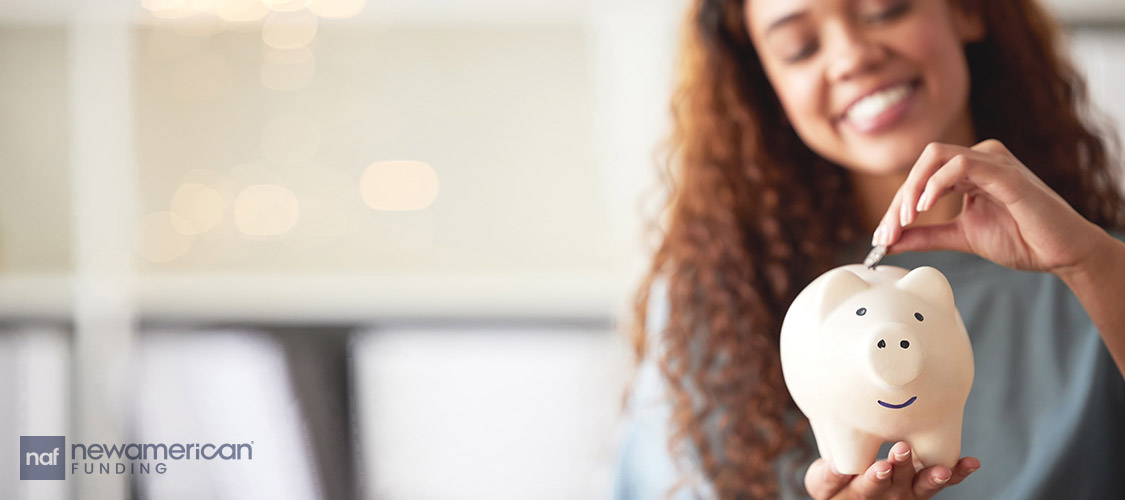Homebuyers
Home Affordability: How to Overcome Financial Hurdles
April 29, 2024
Home affordability is on the minds of many first-time homebuyers today. For a good number of Americans, getting to the point of being able to make home offers starts with addressing financial and credit-related hurdles. What does it take to make a success story? It's important to assess your financial situation today to begin plotting your journey to owning your own home.
Understanding Home Affordability
Home affordability helps to determine the feasibility of owning a home based on your current income and finances. It relies on both external and internal financial factors. Big ones include income, local and national housing market trends, and overall economic factors.
While there is no set rule for how much home a person can afford, most real estate and financial experts agree that the 28/36 rule is a good place to start. Under the 28/36 rule, a buyer should not spend more than 28% of their pre-tax monthly income on home-related costs. No more than 36% of your monthly income should be going toward overall debts that include a mortgage, credit cards, auto loans, and student loans.
Assessing Your Financial Health
How do you know if you're in the right financial shape to purchase a home? Lenders use a whole-picture strategy when reviewing mortgage applications. In addition to your income, your credit score, debt-to-income ratio, and overall financial stability are major factors that determine your creditworthiness to lenders. Your debt-to-income ratio (DTI) is the number that's left when all of your monthly debt payments are divided by your pre-tax monthly income. Keep in mind that higher DTIs and lower credit scores may not exclude a person from being qualified for a mortgage. However, they may prevent you from qualifying for loan products with specific limits. One easy way to get an idea of home affordability on your own is to use a home affordability calculator. While a how much home can you afford calculator isn't an official source, it can provide a rough estimate based on important financial factors.
If you're disappointed by your prospects for being able to afford a home, it's important to know that some small changes can help to get you in better shape for being approved for a mortgage. One of the first things to tackle is your credit score. If you don't already know your credit score, get a copy of your free annual credit report to see where you stand. Paying off debts, contesting any inaccuracies on your credit report, and committing to paying all of your bills on time are some of the best ways to try to boost your score. If you're preparing to get mortgage pre-approval, avoid taking on new debt.
Another area to tackle is your DTI. Generally, the DTI to aim for is 35% or less. One of the fastest ways to bring down your DTI is to boost your income. Reducing monthly bills by dropping unnecessary services or trying to pay down debts faster are two common ways that people try to decrease DTI.
Essential Financial Planning Strategies
Based on the 28/36 rule shared above, an aspiring homeowner can begin to set a budget for how much "home they can afford." Keep in mind that the numbers can vary based on how much you've saved, how much debt you're carrying, and the size of the down payment you intend to put down. Generally, a larger down payment can help to reduce your monthly mortgage expenses.
Saving for a Down Payment
While many homeowners aim to put down 20%, various loan products make it possible to close with anywhere from 0% to 3.5% down. After you've decided how much of a down payment you'll need to comfortably be able to afford a home in your price range, making budget adjustments to put away extra savings each month can be a helpful way to get there. Some ambitious future buyers even set up automatic payment plans that redirect portions of their paychecks to special savings accounts.
Exploring Homebuyer Assistance Programs
Some potential first-time and low-income buyers may even qualify for special assistance designed to boost home affordability for more Americans. This includes the nationwide Down Payment Assistance (DPA) program. Additionally, most states have assistance programs available to first-time buyers intending to purchase homes that will be used as primary residences. Finally, a local real estate team may be able to help you locate grants that you may qualify for based on income or location.
Choosing the Right Mortgage Options
Today's buyers have a variety of mortgage options that can help with affordability. When working with a lender to decide on the best option for you, factors that will be taken into account include your financial health, how long you intend to stay in a home, and the size of your down payment.
Understanding Different Types of Mortgages
One of the first choices to make as a buyer is between a fixed-rate and an Adjustable-Rate mortgage. With a fixed rate, you're locking into a single rate for the duration of your mortgage. With an Adjustable-Rate mortgage (ARM), you're agreeing to a rate that can vary during the life of a loan. Here's a look at different types of mortgages borrowers should know about:
- FHA loan: A Federal Housing Administration (FHA) loan is a government-backed mortgage that can be easier to qualify for compared to a Conventional loan. For borrowers with credit scores of 580 or more, FHA loans only require 3.5% down. All other qualified borrowers will need to put down 10%.
- Conventional loan: Because a Conventional mortgage is not guaranteed or insured by the government, higher down payments are typically required. While the standard down payment on a Conventional loan is 20%, some qualifying borrowers can put down as little as 3% with private mortgage insurance (PMI).
- VA Loan: Offered by the U.S. Department of Veterans Affairs (VA), a VA loan offers a way for qualifying borrowers to get low interest rates and limited closing costs without a down payment or PMI.
- USDA Loan: Available to moderate-income to low-income buyers in select rural areas, USDA loans don't require down payments.
How to Get Pre-Approved for a Mortgage
How much home can I afford? While you may have a rough idea of your buying power, the only way to begin browsing homes with a clear picture of what you can afford is to complete the pre-approval process. Many real estate agents generally won't work with buyers who don't have pre-approvals. A pre-approval shows agents that you're a serious buyer with the ability to make offers. Here's what lenders generally need to see to be able to provide a pre-approval letter:
- Personal identification.
- Payment stubs from the past 30 to 60 days.
- Bank statements from the last two to three years.
- Proof of other income sources that can include bonuses, spousal support, disability benefits, VA benefits, and more.
Keep in mind that a pre-approval letter from a lender is not an official offer for a mortgage. Approval details and conditions may change when you submit a formal application for a mortgage.
Long-term Financial Considerations for Homeowners
While the short-term goal of being approved for a mortgage may be on your mind today, it's also important to aim for a home that is financially sustainable for you. From renovations to unexpected repairs, costs can add up for unprepared homeowners.
Planning for Additional Homeownership Costs
The true cost of homeownership can vary based on the size of the home you're purchasing, the age of your home, and whether you live in a high-cost-of-living area or low-cost-of-living area. Here are some extra homeownership costs that need to be prioritized in your budget when determining home affordability:
- Annual property taxes.
- Cost of home insurance premiums.
- Landscaping and property maintenance.
- Updates and replacements around the home.
- Homeowners Association (HOA) fees.
Refinancing and Mortgage Management
First-time homeowners should be aware that they may have opportunities to refinance their mortgages in the future. In some cases, homeowners can save money on monthly mortgage costs by refinancing to lower interest rates if rates have dropped significantly since they closed. Talking with a lender to see how much you could save through refinancing after taking closing costs into account is the best way to see if this option can increase home affordability when the time comes. Additionally, refinancing via a second mortgage is an option that allows you to tap into a home's equity to obtain credit.
Overcoming Specific Financial Challenges
It's very common for first-time homebuyers to have financial challenges that make them feel intimidated about applying for a mortgage. While there's no guarantee that a borrower will qualify for every type of mortgage, millions of homeowners have overcome hurdles.
Dealing with Less-than-Perfect Credit
Poor credit is one of the top hurdles to homeownership. Fortunately, there are many ways to improve your credit score over time if you're committed to making changes. Some tips include:
- Get caught up with past-due bills.
- Create a payment schedule to ensure you never make late payments.
- Ask for higher credit limits with no intention of hitting them.
- Dispute any errors on your credit report that are dragging your score down.
- Negotiate settlements with creditors.
- Become an authorized user on a credit account with a long history and high credit limit.
- Ask a landlord to report your consistent on-time payments to credit agencies.
- Open a new credit card to get a better credit mix.
Handling High Debt Levels
You can calculate your debt-to-income ratio by dividing your total monthly debt payments by your monthly pre-tax income. Simply multiply the number you get by 100 to see your DTI as a percentage. If your DTI is over 35%, you may want to consider bringing down your debt level.
As covered earlier in this article, one of the most common ways that people handle high debt levels is to increase income to try to pay down debts faster. Another way is to try to decrease the cost of living to put more money toward debts. If you're carrying high debts tied to loans or credit card bills, debt consolidation or forgiveness plans may help you to reduce your monthly debt balance.
Learning from Successful Homebuyers
Aspiring homeowners have many success stories to look to when finding inspiration to keep pushing forward when they have less-than-perfect credit histories.









 Smart Moves Start Here.
Smart Moves Start Here.